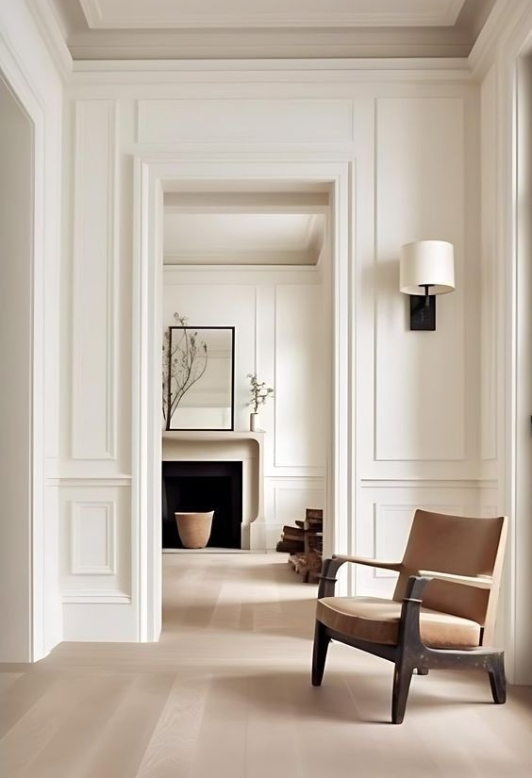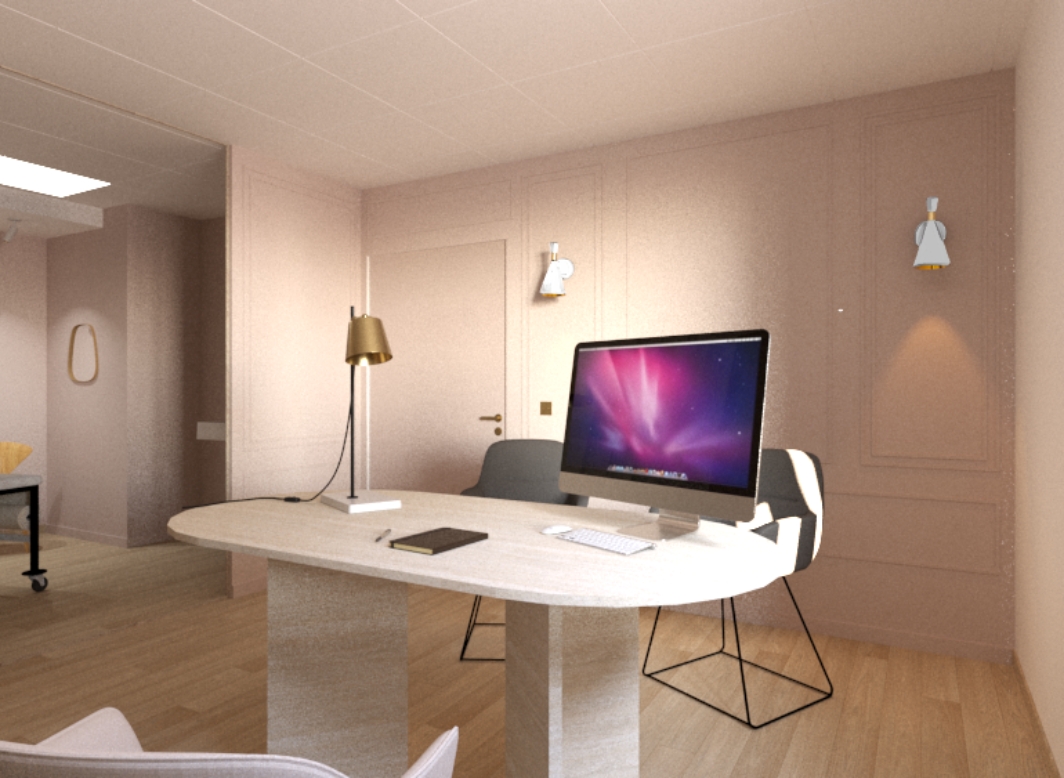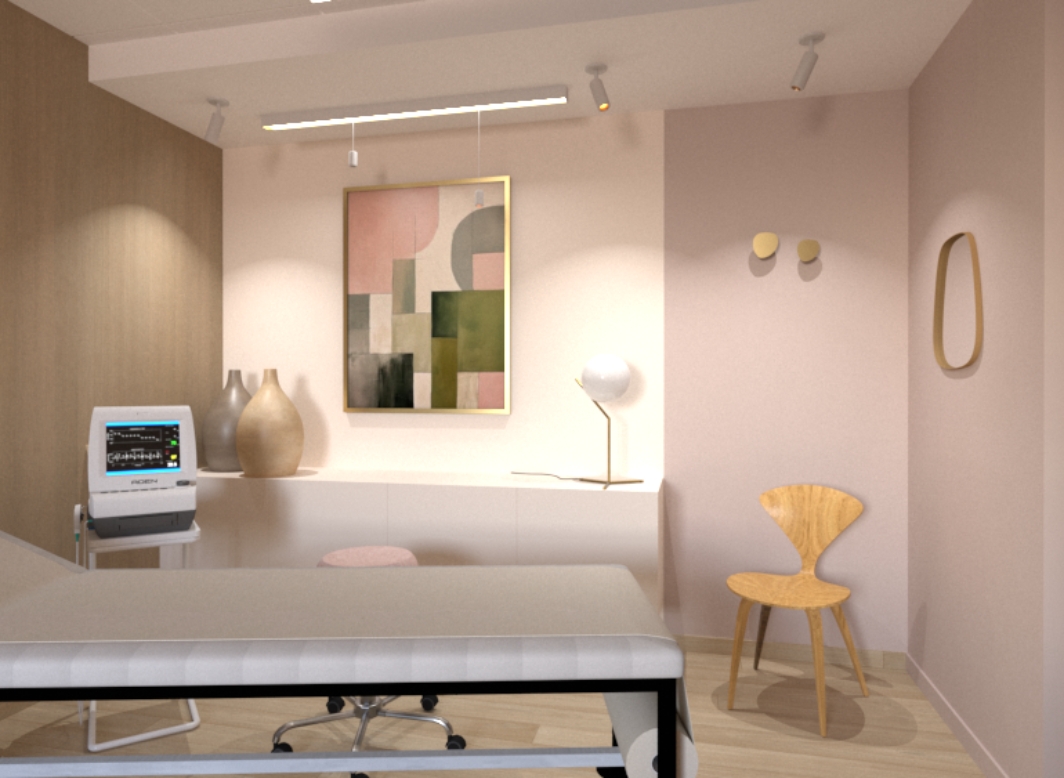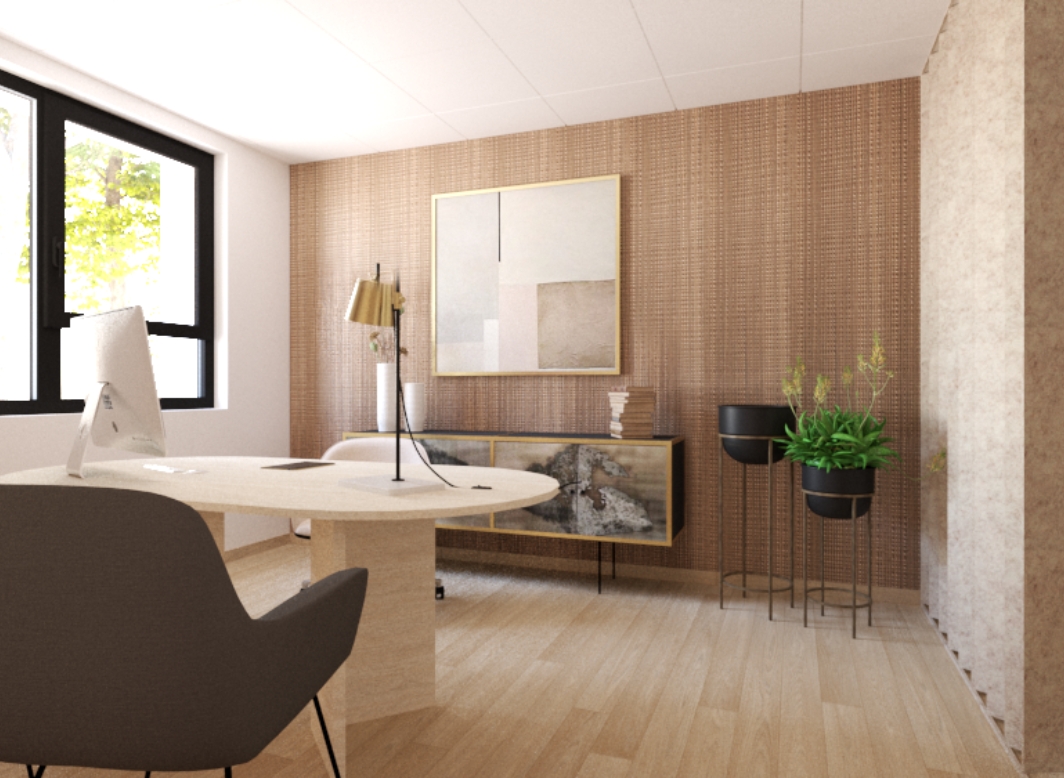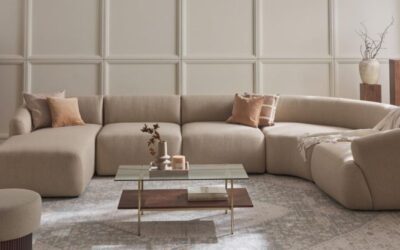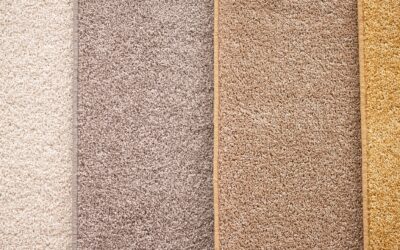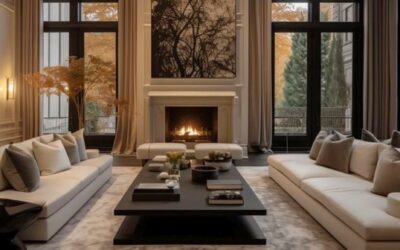As I speak, I'm involved in a project that's particularly important to me: renovating the practices of two gynecologists in Aix-en-Provence. I had already renovated a gynecologist's practice a few years ago, and I invite you to take a look at that magnificent renovation.
From our very first meetings, I felt the desire to transform this medical space into a warm and soothing place for their patients. It was at this point that the moulures murales design of the niches became obvious to me.
These often overlooked architectural details have the power to bring a touch of elegance and personality to any interior. By incorporating wall moldings into the design of the office we're building, I'm convinced we're creating an atmosphere that's both professional and welcoming.
Today, I'd like to share my experience with you and explain why wall moldings have become an essential element in my interior design projects.
Wall mouldings: A trend making a strong comeback
Analysis of current trends
In recent years, I've noticed that wall moldings are making a comeback in the world of interior design. Long associated with classic interiors and historic homes, they are now appealing to a new generation in search of elegance and character for their spaces. I believe this renewed interest can be explained by a desire to break away from the pared-down minimalism that has dominated in recent decades.
The media and social networks have made a major contribution to this renaissance. Scrolling through Instagram or Pinterestit's impossible not to come across sumptuous interiors where moldings play a central role. Influencers and designers alike highlight bold combinations, marrying traditional moldings with contemporary elements. This blend of classic and modern creates warm, sophisticated atmospheres that inspire my own projects.
Innovation and modernity
Today, wall moldings are reinventing themselves thanks to new techniques and innovative materials. Far from the constraints of plaster mouldings of yesteryear, we now have lightweight materials such as polyurethane or high-density MDF, which make installation easier while offering great durability.
I've had the opportunity to incorporate contemporary molding designs into my projects, with clean geometric shapes or custom patterns. Laser-cutting technology delivers incredible precision, opening the way to limitless creativity.
What's more, finishes are becoming more diverse, with bold colors, metallic effects and even integrated lighting creating unique atmospheres. These innovations make wall moldings more accessible and suitable for modern interiors.
My passion for wall mouldings
A timeless heritage
Since the beginning of my career as an interior designer, wall mouldings have always held a special place. They are much more than a simple decorative ornament; they are a living testimony to the history of interior architecture. Mouldings have stood the test of time, from sumptuous Renaissance palaces to elegant Haussmann mansions and today's contemporary interiors.
What fascinates me is their ability to evolve over time while retaining their essence. Wall moldings have been able to adapt to different styles and trends, whether baroque, classical, art deco or modern. They bring a depth and visual richness that transcend fleeting fashions. Integrating moldings into a project breathes soul into a space, giving it a unique history and identity.
A personal touch
My attachment to wall moldings stems from their incredible creative potential. They offer a multitude of possibilities for personalizing an interior and making it truly exceptional. What fascinates me most is the ability to play with shapes, patterns and proportions to create customized atmospheres.
In my projects, I like to use wall mouldings to emphasize the architecture of a room, frame important elements or create focal points. For example, in a living room, I integrated modern geometric moldings to bring dynamism and relief to the walls. In a bedroom, I opted for delicate, rounded mouldings to create a soft, soothing atmosphere.
The different types of wall mouldings today
Classic mouldings
Classic wall moldings are a true tribute to the architectural styles of yesteryear. They feature elaborate patterns, elegant curves and ornamental details that bring a touch of timeless elegance to an interior. I like to integrate these moldings into projects where the charm of the past needs to be preserved or recreated. They are ideal for historic residences, Haussmann-style apartments or any space wishing to reflect a refined atmosphere.
Timeless styles include carved cornices, ceiling roses, molded baseboards and decorative chair rails. These elements add depth and character to rooms, while emphasizing the existing architecture. For example, I recently used classic moldings in a living room renovation to accentuate the ceiling height and highlight the openings.
Contemporary mouldings
With the evolution of interior design trends, contemporary wall moldings have reinvented themselves to suit modern interiors. They are distinguished by clean lines, simple geometric shapes and an absence of frills. These moldings add a discreet touch of sophistication without weighing down the space.
I particularly enjoy using contemporary mouldings in minimalist or industrial projects. For example, wall panels with geometric reliefs can create a striking visual effect in a living room or hallway. Innovative materials such as high-density MDF, polyurethane or even metal can be used to create original, long-lasting designs.
Contemporary mouldings also offer the opportunity to play with color. Painted in contrasting hues or tone-on-tone with the wall, they can either blend into the décor or become a focal point of the room. In my gynecologist client's practice, I opted for contemporary moldings with simple lines, painted in soothing tones to create a serene atmosphere.
Custom mouldings
One of the things I love most about my job is the ability to create customized wall moldings that reflect each customer's unique identity. Thanks to new manufacturing technologies, such as laser cutting and 3D printing, it's now possible to design custom moldings with exceptional precision.
Whether to incorporate a specific motif, a logo or a completely original design, custom moldings offer infinite creative freedom.
The possibilities are vast: abstract shapes, embossed text, artistic motifs... These moldings then become more than just a decorative element; they tell a story, the story of my customers. As an interior designer, it's a real pleasure to be able to materialize their ideas and to see their enthusiasm when the project comes to life.
Flagship project: Renovating the offices of my gynecologist clients
When two gynecologists contacted me to renovate their practice in Aix-en-Provence, I immediately understood the importance of creating a space that was professional, soothing and welcoming for their patients. Their needs were specific: they wanted an environment that would reassure and put them at ease, while reflecting their medical expertise. It was essential to combine functionality and aesthetics to optimize their daily practice, while providing a warm and welcoming atmosphere. Let's not forget that this is their workplace, and they spend more time here than at home!
I chose contemporary moldings with clean lines, made from resistant, easy-care materials suitable for a medical environment.
In the consulting rooms, I used wall moldings to structure the walls and create comfortable seating areas. They add relief and depth, transforming the room into a convivial place where patients can relax. The moldings, painted in soft, soothing tones, help to create a serene atmosphere.
The integration of wall moldings reflected the seriousness and professionalism of the practitioners, while demonstrating particular attention to the well-being of patients.
Tips for integrating wall mouldings into your home
Choosing the right moulding style
If you're considering adding wall moldings to your interior, it's essential to choose a style that complements your existing decor. For a classic interior, opt for moldings with detailed patterns and elegant curves that will reinforce the traditional character of your space. Conversely, if your interior is modern or minimalist, moldings with clean, geometric lines will blend in perfectly without weighing the room down.
It's also important to consider the proportions of your room. In a small space, moldings that are too imposing can overwhelm the volume and make the atmosphere stifling. Choose fine, discreet moldings that add a touch of elegance without overloading the space. For large rooms with high ceilings, you can afford wider, more ornate mouldings to accentuate the grandeur of the space.
Mistakes to avoid
Installing wall mouldings may seem simple, but for impeccable, long-lasting results, calling in a professional is highly recommended. As an interior designer, I know that careful installation makes all the difference. A professional will know how to prepare surfaces properly, make precise cuts and ensure solid fixing.
What's more, personalized advice will help you maximize the potential of wall moldings in your interior. An expert can guide you in choosing the designs, materials and locations best suited to your needs and space. This will help you avoid costly mistakes and guarantee a result that lives up to your expectations.
Calling in a professional
One of the most common mistakes I encounter is the tendency to try to do too much. Multiplying moulding patterns and styles in the same room can create visual overload and detract from the overall harmony. It's better to choose a consistent style and apply it sparingly to highlight certain architectural elements.
Neglecting the importance of material quality is also a mistake to be avoided. Poor-quality wall mouldings can quickly warp, crack or become damaged, compromising the aesthetics of your interior. Investing in quality materials guarantees not only superior visual appeal, but also long-term durability.






